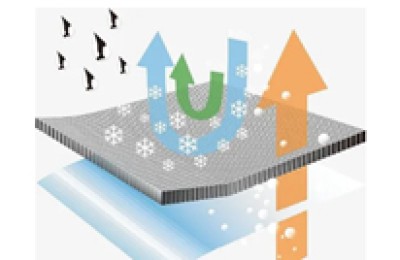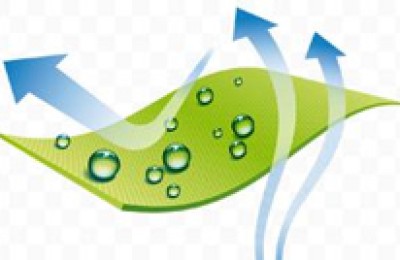Research on UV Resistance and Wind Resistance Technology of TPU Composite Fabric Used in Parasols
Introduction
TPU (Thermoplastic Polyurethane) composite fabrics have gained significant attention for their use in parasols due to their superior properties such as flexibility, durability, and resistance to various environmental factors. This research focuses on enhancing the UV resistance and wind resistance of TPU composite fabrics specifically designed for parasol applications.
1. UV Resistance Technology
1.1 Mechanism of UV Degradation
UV radiation can cause photodegradation of polymers, leading to a decrease in mechanical strength, color fading, and reduced lifespan. For TPU composite fabrics, this degradation can be mitigated through several strategies:
- Additives: Incorporating UV stabilizers and absorbers into the TPU matrix can significantly enhance UV resistance.
- Surface Coatings: Applying UV-resistant coatings on the fabric surface provides an additional barrier against UV radiation.
- Nano-enhancements: Introducing nanoparticles like TiO2 or ZnO can absorb UV light and prevent it from penetrating deeper into the material.
1.2 Additives for UV Protection
- Hindered Amine Light Stabilizers (HALS): HALS are highly effective in scavenging free radicals generated by UV exposure, thus preventing chain scission and cross-linking.
- UV Absorbers: These compounds absorb UV radiation and dissipate it as heat. Common UV absorbers include benzophenones and benzotriazoles.
1.3 Surface Coatings
- Polymeric Coatings: Acrylic or silicone-based coatings can provide a durable layer that shields the TPU fabric from direct UV exposure.
- Metallic Films: Thin layers of aluminum or other metals can reflect UV radiation, reducing its impact on the fabric.
1.4 Nano-enhancements
- Titanium Dioxide (TiO2): TiO2 nanoparticles have high UV absorption capabilities and can also act as photocatalysts, breaking down organic contaminants.
- Zinc Oxide (ZnO): ZnO nanoparticles offer broad-spectrum UV protection and have antimicrobial properties.
2. Wind Resistance Technology
2.1 Structural Design
The design of parasols plays a crucial role in wind resistance. Key considerations include:
- Frame Material: Using lightweight yet strong materials like aluminum or fiberglass for the parasol frame enhances stability.
- Fabric Shape and Configuration: Aerodynamic shapes and configurations reduce drag and improve wind resistance.
2.2 Reinforcement Techniques
- Reinforced Seams: Ensuring that seams are reinforced with stronger threads or tapes can prevent tearing under wind stress.
- Ply Construction: Multi-ply construction increases the overall strength of the fabric, making it more resistant to wind-induced stresses.
2.3 Advanced Materials
- High-Density Weave: A tightly woven fabric structure improves tensile strength and reduces air permeability, enhancing wind resistance.
- Hybrid Fabrics: Combining TPU with other materials like polyester or nylon can create a composite fabric with improved mechanical properties.
2.4 Ventilation Features
- Ventilation Panels: Incorporating ventilation panels or vents allows air to pass through the parasol, reducing uplift forces and improving stability.
- Pleats and Folds: Strategic placement of pleats and folds can help distribute wind forces more evenly across the fabric.
3. Combined UV and Wind Resistance Solutions
3.1 Multi-functional Coatings
Developing coatings that combine UV protection and wind resistance properties can simplify the manufacturing process and enhance overall performance. For example, a coating that incorporates UV absorbers and hydrophobic agents can protect against both UV degradation and moisture-related issues while maintaining structural integrity under wind loads.
3.2 Smart Fabrics
Integrating smart materials that respond to environmental stimuli can further enhance the functionality of TPU composite fabrics. For instance, shape-memory alloys can adjust the tension in the fabric based on wind speed, providing dynamic wind resistance.
Conclusion
Enhancing the UV and wind resistance of TPU composite fabrics used in parasols involves a combination of material science advancements, innovative design techniques, and advanced manufacturing processes. By integrating UV stabilizers, surface coatings, nano-enhancements, and structural reinforcements, it is possible to develop parasols that offer superior protection against environmental elements while maintaining aesthetic appeal and functional longevity.
Future Directions
Further research should focus on optimizing the balance between UV and wind resistance without compromising the lightweight and flexible nature of TPU composite fabrics. Additionally, exploring biodegradable additives and sustainable manufacturing practices will contribute to environmentally friendly parasol products.
This structured approach aims to provide a comprehensive overview of the current technologies and future directions in developing UV and wind-resistant TPU composite fabrics for parasols.







